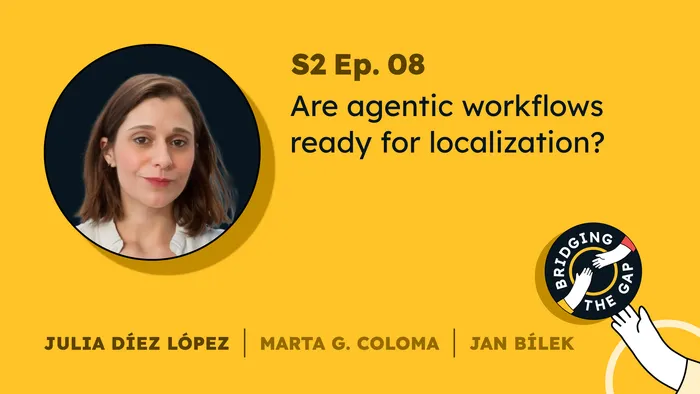Agentic workflow
An adaptive system that uses AI agents to interpret prompts, coordinate tasks, and deliver context-aware outputs across tools and formats.
Agentic workflows refer to AI-powered systems where autonomous agents can reason, plan, and execute complex tasks with minimal human input. Unlike traditional automation, these agents can adapt to new information, coordinate with other agents, and make decisions to complete multi-step processes.
⚙️ What can agentic workflows do? #️⃣
- Agents can interpret high-level prompts and carry out actions without step-by-step instructions.
- Tasks are often split among specialized agents, each responsible for a specific function.
- Agents adapt to input, evolving conditions, or new instructions in real time.
- Agentic systems connect with APIs, third-party tools, and file systems to complete tasks end-to-end.
🌍 The use of agentic workflows in localization #️⃣
In localization, agentic workflows can save a lot of energy spent on manual or complex, cross-channel tasks.
For example, an AI agent can:
- Localize visual content for the target markets after analyzing the standards.
- Generate subtitles and voiceover scripts specifically for the target language and with the right brand tone.
- Adjust (or suggest) UI layouts for right-to-left (RTL) languages or languages with longer text expansion.
- Detect inconsistencies in translated assets and trigger fixes automatically.
Platforms like GenSpark, AutoGPT or Manus illustrate how agentic workflows are evolving. While not built solely for localization, these systems can perform content adaptation, cultural analysis, and layout fixes across languages, all within a single interface.
As multimedia and cross-channel localization demands grow, agentic workflows provide a flexible, scalable way to meet quality and speed expectations without burning out human teams.
